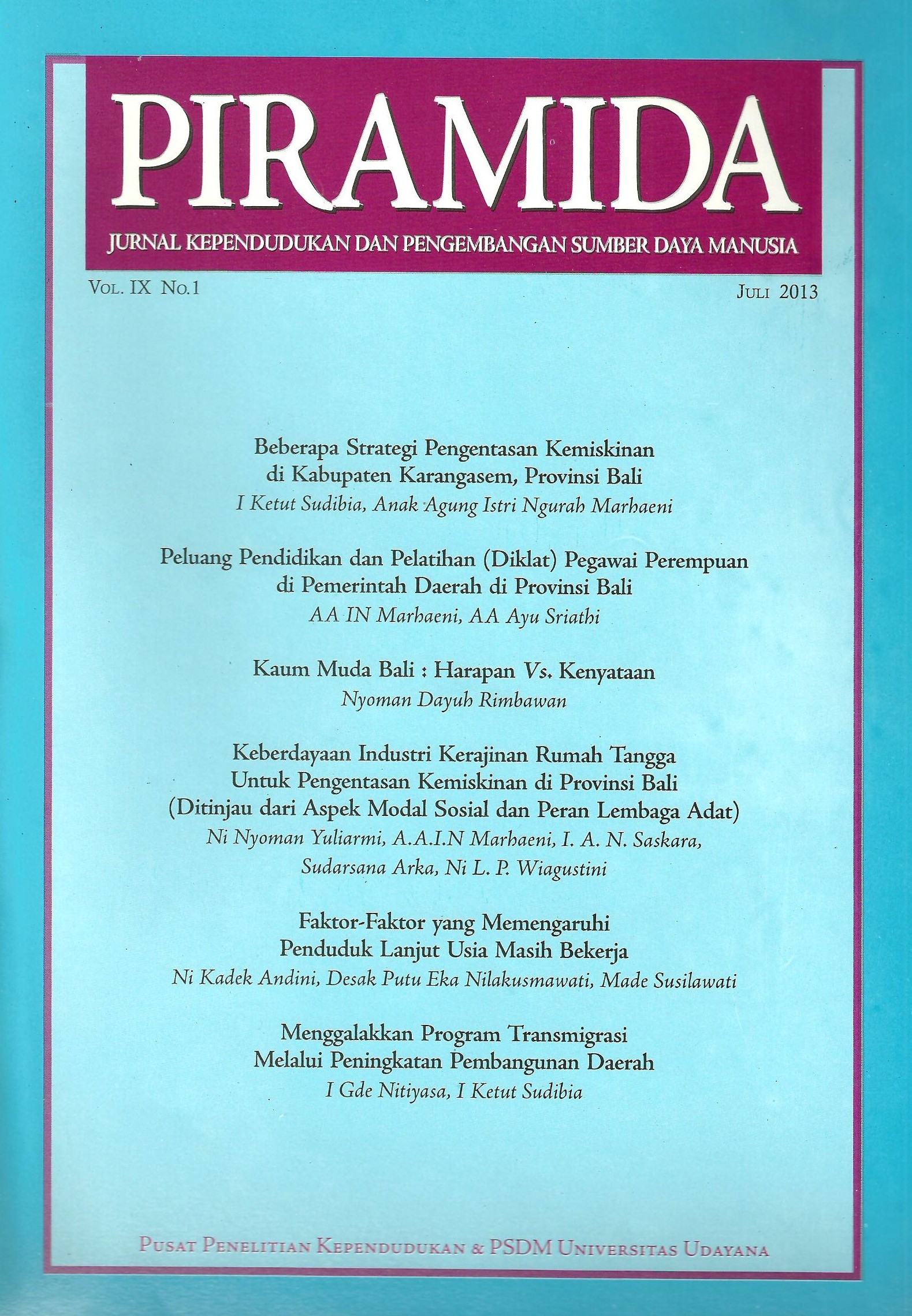Beberapa Strategi Pengentasan Kemiskinan di Kabupaten Karangasem, Provinsi Bali
Abstract
Karangasem is one of Bali’s regency that has relatively high level of poverty. In year of 2007 and 2009 the proportion of poor people in the regency was 8.95 and 6.37 percent respectively, while in Bali Province the numbers were only 6.63 and 4.88 percent in the same periods. Poverty problem in Karangasem is also indicated by Human Development Index of 66.06 in 2009, which was the lowest index in Bali Province. Based on these facts, the problem of this research would be: what are the appropriate development policy strategies to alleviate poverty level in Karangasem Regency?
Karangasem is purposively selected as the research location because it has the lowest human development index in Bali. Samples are taken by accidental sampling with poor households as the respondents. Ninety respondents are distributed evenly to three sub-districts namely Karangasem, Manggis, and Abang. The three sub-districts have fulfilled requirements to become development corridor in Bali Province, which consists of tourism, agriculture, animal husbandry, and fishery. Next, data are collected through a structured interview and observation, while analysis is done descriptively by using frequency distribution and cross tabulation.
Based on data analysis and discussion of the results, there are two strategies of poverty alleviation that could be done. Firstly, cluster one is strategy for the really poor households with low level of education. With the limitation in economic and social ability, job opportunities through putting out system should be provided to these kinds of households. They are given opportunities to produce goods for certain companies. Thus, three parties are involved: the poor people, the company, and the government (in this case, is Ministry of Industry and Trade, and Ministry of Labor. Secondly, cluster two is strategy for poor people that enforce labor to become self-entrepreneur to increase their income. For entrepreneur households, it is suggested to develop their business into micro, small, and medium enterprises in order to increase sales. This strategy uses quality improvement approach in production, marketing, and funding process. The cluster 2 strategy is a partner-based model of rural community empowerment.




